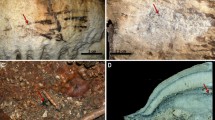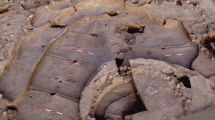Abstract
VI.—DOLMENS.
IN some previous notes I have given an account of some measurements of the so-called "cromlechs "of Cornwall. In referring to this subject in a more general manner, it will be well, I think, pour preciseles, to refer to the word itself. In English works on archasology it is used as a variant for dolmens, chambered barrows, chambered cairns, and kistvaens, while in France it is applied to the more or less irregular circles and groups of stones associated with avenues; and there the: equivalents of the Cornish "cromlechs,"which exist in great numbers, are invariably called dolmens.
This is a preview of subscription content, access via your institution
Access options
Subscribe to this journal
Receive 51 print issues and online access
$199.00 per year
only $3.90 per issue
Buy this article
- Purchase on Springer Link
- Instant access to full article PDF
Prices may be subject to local taxes which are calculated during checkout
Similar content being viewed by others
References
From MS. in the Bodleian Library at Oxford, quoted in "Archæologia," vol xxxviii., p 407.
"Abury Described," p. 46.
"Ancient Wilts, North," p. 96.
Proceedings of Archæological Institute, Salisbury volume, pp. 97, 98.
Proc. R.I.A., iv., pp. 589–605 (1896–8).
Rights and permissions
About this article
Cite this article
LOCKYER, N. Notes on Ancient British Monuments 1 . Nature 77, 414–416 (1908). https://doi.org/10.1038/077414a0
Issue Date:
DOI: https://doi.org/10.1038/077414a0
Comments
By submitting a comment you agree to abide by our Terms and Community Guidelines. If you find something abusive or that does not comply with our terms or guidelines please flag it as inappropriate.



